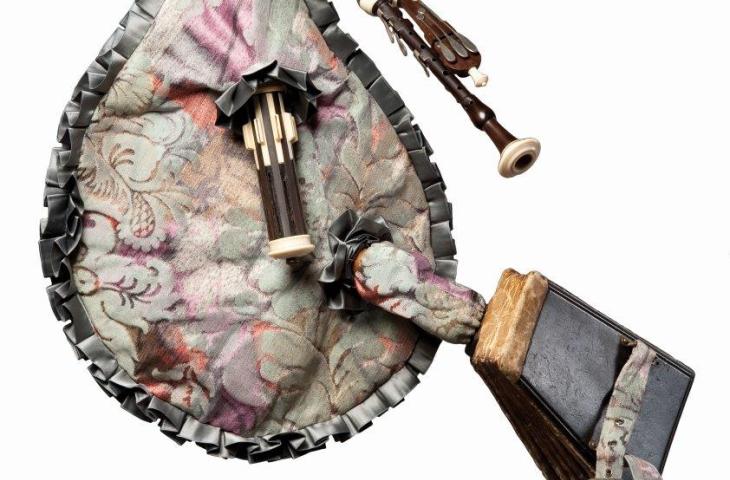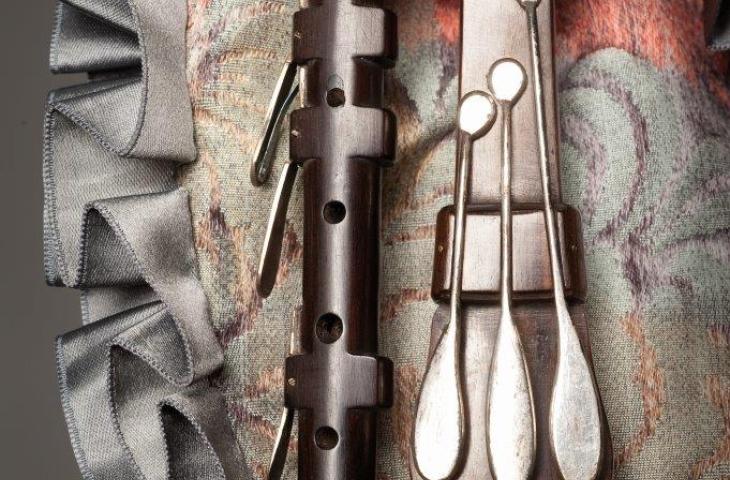Baroque musette

Baroque musette, Chédeville, Paris, 18th century, inv. 1125
Baroque musette

Baroque musette, Chédeville, Paris, 18th century, inv. 1125
Enjoying its heyday during the period of the French Baroque, the musette is a small bagpipe of particularly ingenious construction. It has up to three chanters with keys and several drones set compactly within a small cylinder. The bag is provided with air by bellows fastened to the right arm of the musician.
It was the Hotteterre family that gave the musette its definitive form, an example of instrument-building at its very best. The precision work in chanter construction, as well as the finesse of the boring of the drones – which total more than two metres in length and are set within a cylinder barely ten centimetres long – make it one of the most refined of instruments. The use of such costly materials as ivory, ebony, silver, silk and brocade indicate that the musette was built for aristocratic circles. It made its appearance in the Court ballets of the end of the sixteenth century and its popularity increased in the mid-seventeenth; witness to that popularity is the surprisingly large number of compositions written for the instrument, including suites, sonatas and concertos. It likewise played an important part in pastoral scenes in French opera.